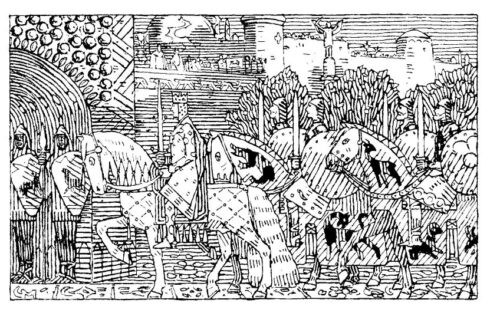Baby
Towards the end of the 11th century, the city became a bishop’s seat and a few years later the two churches of the city were rebuilt in stone.
The devout Christian King Sigurd the Crusader would build the town’s first cathedral, St. Hallvard’s Cathedral at the beginning of the 12th century, right next to the Old Bishop’s Palace today.
The cathedral would be dedicated to St. Hallvard from Lier, who had died a few years earlier (1043) defending an innocent pregnant woman near Drammen. His relics would be placed on the high altar of the Cathedral upon the King’s death in 1130 who was also buried in the chancel’s south wall. St Hallvard became the city’s patron saint & his image still adorns the city’s seal.



In 1147 a group of Cistercian monks from Kirkstead Abbey in England moves to Hovedøya Island, in the mouth of the Oslo fjord, and establishes its abbey around a pre-existing church dedicated to Saint Edmund. The Hovedøya abbey would grow to be one of the wealthiest institutions in Norway with over 400 properties in its possession in the years to follow.
In 1153 a papal delegate establishes the Cathedral School of Oslo for the education of priests who would study the traditions of the Roman Catholic Church as well as grammar, logic, rhetoric, geometry, music & astronomy. The school would be directed by the Cathedral of St. Hallvard & would help turn Oslo into a Norwegian cultural hub.


After the death of King Sigurd the Crusader in 1130, a series of civil wars ravaged Norway with the rival factions finally condensing into two opposing parties, the Birkebeiner (faction of peasants, the word translated into birch-legs, because many of them were so poor that would wind birch-bark around their feet instead of proper footwear) & the Bagler (a faction of aristocracy, clergy & merchants. The word translated into crosier, a token of religious authority).




